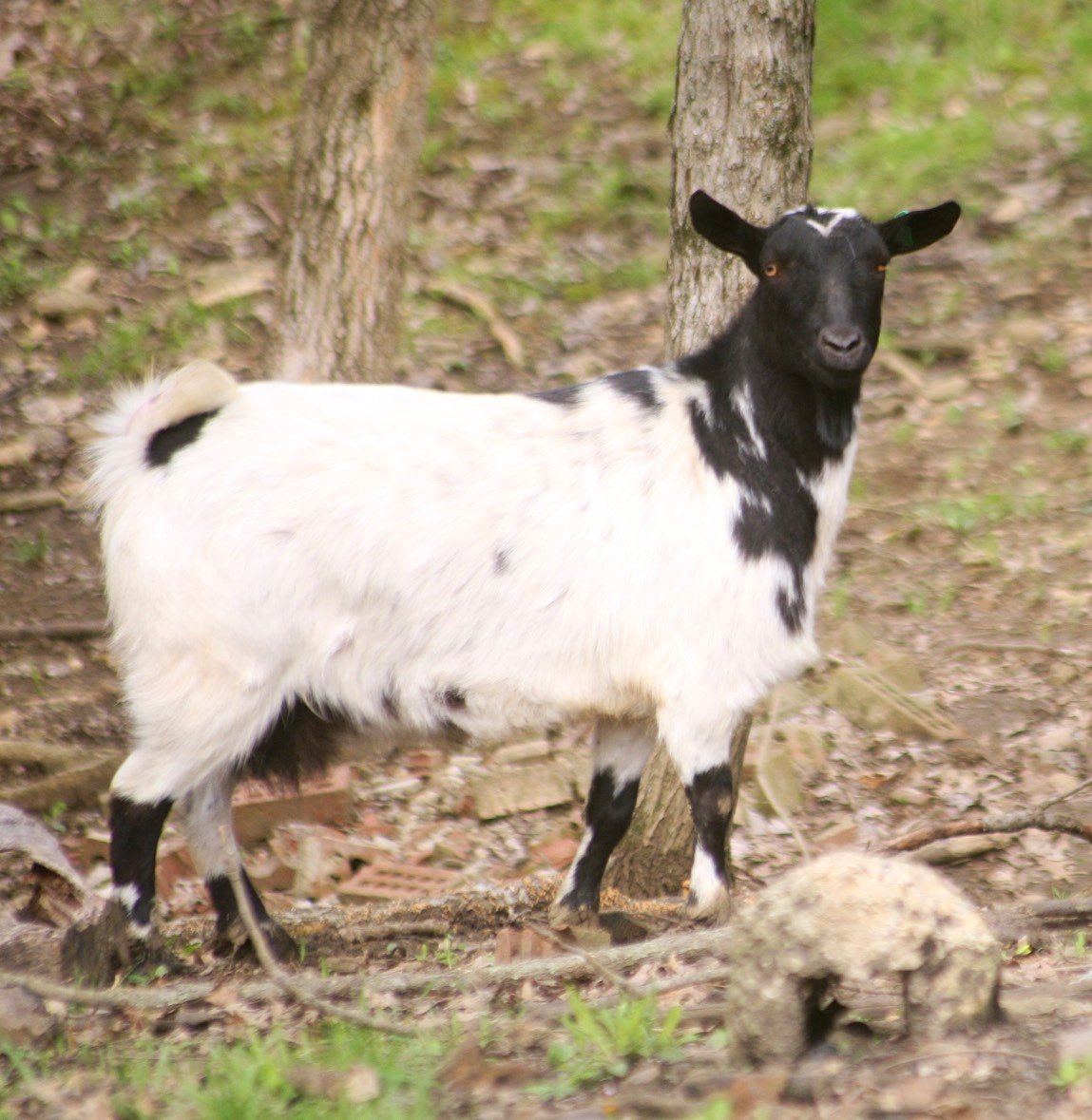Imagine a peaceful farmyard scene suddenly interrupted by a loud clap or a barking dog. Out of nowhere, a goat freezes in place, stiff as a statue, and then tips over onto its side—legs stuck out, eyes wide open, utterly helpless. It’s a sight that can seem both hilarious and baffling, but behind this quirky behavior lies a unique story of genetics, survival, and the mysteries of animal biology. Fainting goats, with their peculiar tendency to collapse when startled, have fascinated and amused people for generations. But what really causes these animals to fall over at the slightest scare? The answer is much more surprising, and touching, than most people expect.
The Peculiar Phenomenon: What Is a Fainting Goat?
Fainting goats, officially known as myotonic goats, are a domestic breed famous for an extraordinary reaction: when they get startled, their muscles suddenly stiffen, and sometimes they tumble to the ground. This odd spectacle has made them stars of viral videos and rural legends. Unlike other animals that dart away in fear, these goats freeze up, sometimes toppling over in a comical fashion. But this is not true fainting as humans experience. The goats remain fully conscious, wide awake, and aware of their surroundings even as they tip over. This strange trait has puzzled scientists and delighted onlookers in equal measure for over a century.
The Science Behind the Stiffness: Understanding Myotonia Congenita
At the heart of the fainting goat’s drama is a genetic condition called myotonia congenita. This hereditary disorder affects the way muscle cells handle electrical signals. When a fainting goat is startled, a temporary disruption in muscle relaxation occurs, causing their muscles to contract and stiffen uncontrollably. Unlike typical goats that can bolt away in fright, these goats freeze up because their muscles simply cannot relax quickly enough. The phenomenon only lasts for about 10 to 20 seconds, after which the goat gets back up, often unfazed. Some goats experience a mild stiffness and remain standing, while others, especially young or excitable ones, may collapse entirely.
The Genetics of Fainting: Why Do Only Some Goats Tip Over?
Not all goats are born with the tendency to faint. The trait is inherited in an autosomal dominant fashion, which means only one copy of the gene from either parent is needed for the condition to appear. Breeders have selectively propagated this gene for generations, leading to flocks where most or all goats display this peculiar reaction. Interestingly, even among fainting goats, the severity can vary widely—some may only stiffen slightly, while others topple over dramatically with the slightest surprise. The gene responsible affects chloride channels in the muscle cells, making it difficult for the muscles to relax after contracting.
From Survival Instinct to Comedy: Is Fainting an Evolutionary Adaptation?
It seems counterintuitive—a goat that collapses when frightened hardly sounds like a survivor in the wild. In fact, this trait would likely be a liability in nature, making the goats easy targets for predators. However, in the safe confines of farms, this oddity has persisted and even thrived. Some animal behaviorists speculate that the sudden collapse might confuse predators for a moment, but there’s little evidence this offers a real advantage. Instead, the trait has been preserved largely through human intervention and selective breeding, turning what might have been a disadvantage in the wild into an endearing quirk of domesticated life.
Daily Life with Fainting Goats: Challenges and Care
Owning fainting goats is both amusing and challenging. Caretakers must be mindful of their goats’ unique needs, as sudden scares can lead to frequent falls, especially in new or stressful environments. While the condition itself is not painful or harmful, repeated falling can cause minor injuries or stress. Responsible owners often provide soft bedding and avoid exposing the goats to unnecessary frights. Despite their nervous-sounding reputation, fainting goats are usually calm, friendly, and sociable animals that quickly become favorites among farm visitors and children.
Fainting Goats in Pop Culture: Stars of the Internet and Beyond
Thanks to their slapstick antics, fainting goats have become viral sensations across social media platforms. Videos of these goats freezing and toppling have been watched by millions, sparking laughter and a fair share of bewilderment. They’ve been featured on television shows, in documentaries, and even inspired internet memes. For many, the fainting goat is a symbol of rural charm and the unexpected surprises found in nature. Their internet fame has also led to increased interest in the breed, but it’s important for would-be owners to understand the responsibility that comes with these unusual animals.
Myths and Misconceptions: Clearing Up the Confusion
Many people mistakenly believe that fainting goats actually lose consciousness when they collapse, but this is not true. The goats are fully awake and alert during these episodes. Another common myth is that the condition causes suffering or chronic pain. In reality, myotonia congenita itself is not painful, though repeated falls can sometimes lead to minor bruises. It’s also untrue that fainting goats are fragile or sickly; most live healthy, active lives with proper care. Dispelling these myths is important for ensuring the well-being of the goats and the understanding of their unique nature.
Fainting Goat Breeds: More Than Meets the Eye

While the term “fainting goat” might conjure up a single image, there is actually a variety of breeds that can carry the myotonic gene. The classic fainting goat is small to medium in size, often with a stocky build and expressive eyes. Their coats can range from sleek and shiny to thick and woolly, in colors from black and white to shades of brown and gray. Some farmers have crossed fainting goats with other breeds to combine traits, resulting in unique appearances and varying degrees of myotonia. Each goat, like every animal, has its own personality and quirks, making them endlessly fascinating companions.
Fainting Goat Communities: From Curiosity to Conservation
Enthusiasts around the world have formed communities to celebrate, breed, and protect fainting goats. There are clubs, registries, and even national shows dedicated to these animals, where fans gather to share stories, exchange advice, and showcase their goats. Some groups focus on preserving the pure lines of myotonic goats, while others experiment with crossbreeding for different characteristics. Through education and responsible breeding, these communities ensure that fainting goats remain a cherished part of agricultural heritage rather than just a fleeting internet sensation.
The Human Connection: Why We Love Fainting Goats
There’s something irresistibly human about fainting goats—their vulnerability, their resilience, and their ability to make us laugh at life’s little surprises. Watching a goat tip over in response to a sudden scare is a reminder that even the toughest creatures have their quirks and weaknesses. For many, these goats are more than just farm animals; they’re companions, conversation starters, and a source of endless fascination. Their story is a testament to the strange beauty of nature’s diversity and the unexpected ways animals and humans connect.
An Ongoing Mystery: What More Can We Learn?
Despite decades of research, scientists are still unraveling the full story behind myotonia congenita and its effects on fainting goats. Recent advances in genetics and neurology offer hope for even deeper understanding of how muscle function works, not just in goats but in humans too. Some researchers study fainting goats as models for human muscle disorders, hoping to unlock new treatments or therapies. The curiosity sparked by these animals continues to drive scientific discovery, reminding us that every oddity in the animal kingdom can reveal something profound about life itself.
Fainting goats, with their unforgettable antics and mysterious biology, capture our imagination like few other creatures. Their story is a blend of science, history, and heart—a reminder that even the most surprising quirks can lead to wonder, laughter, and a deeper appreciation for the marvels of the natural world.



